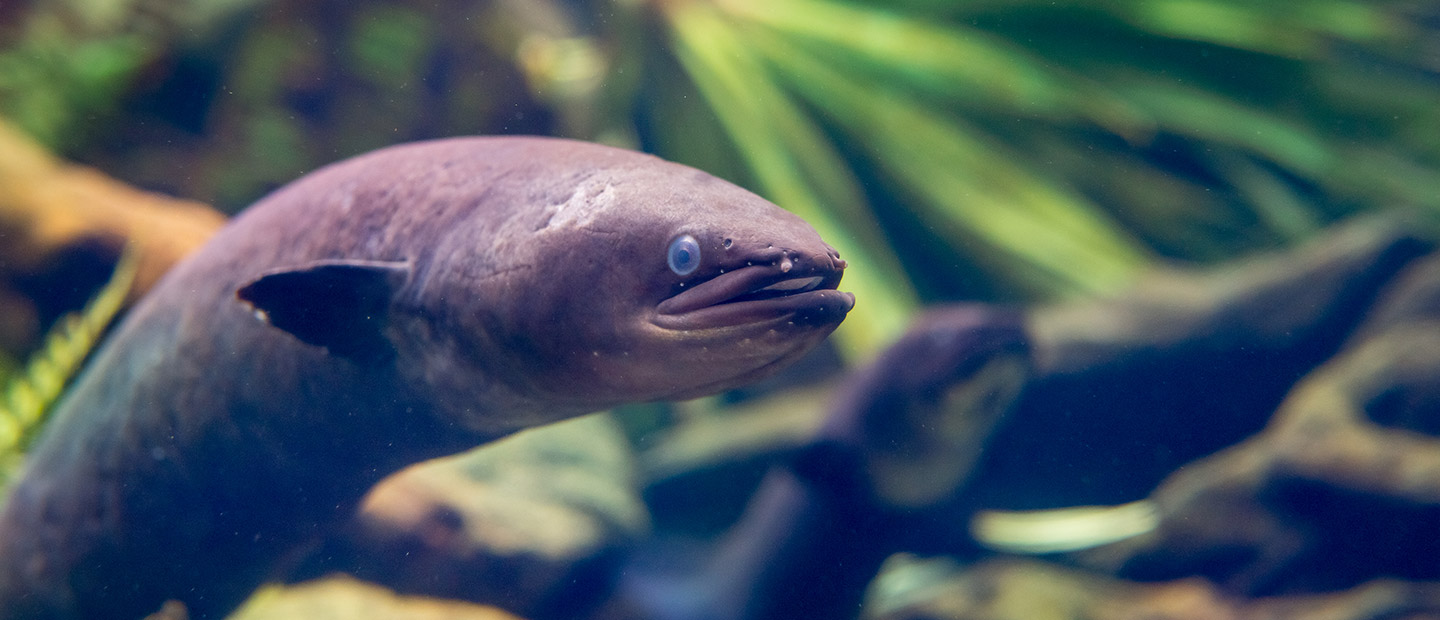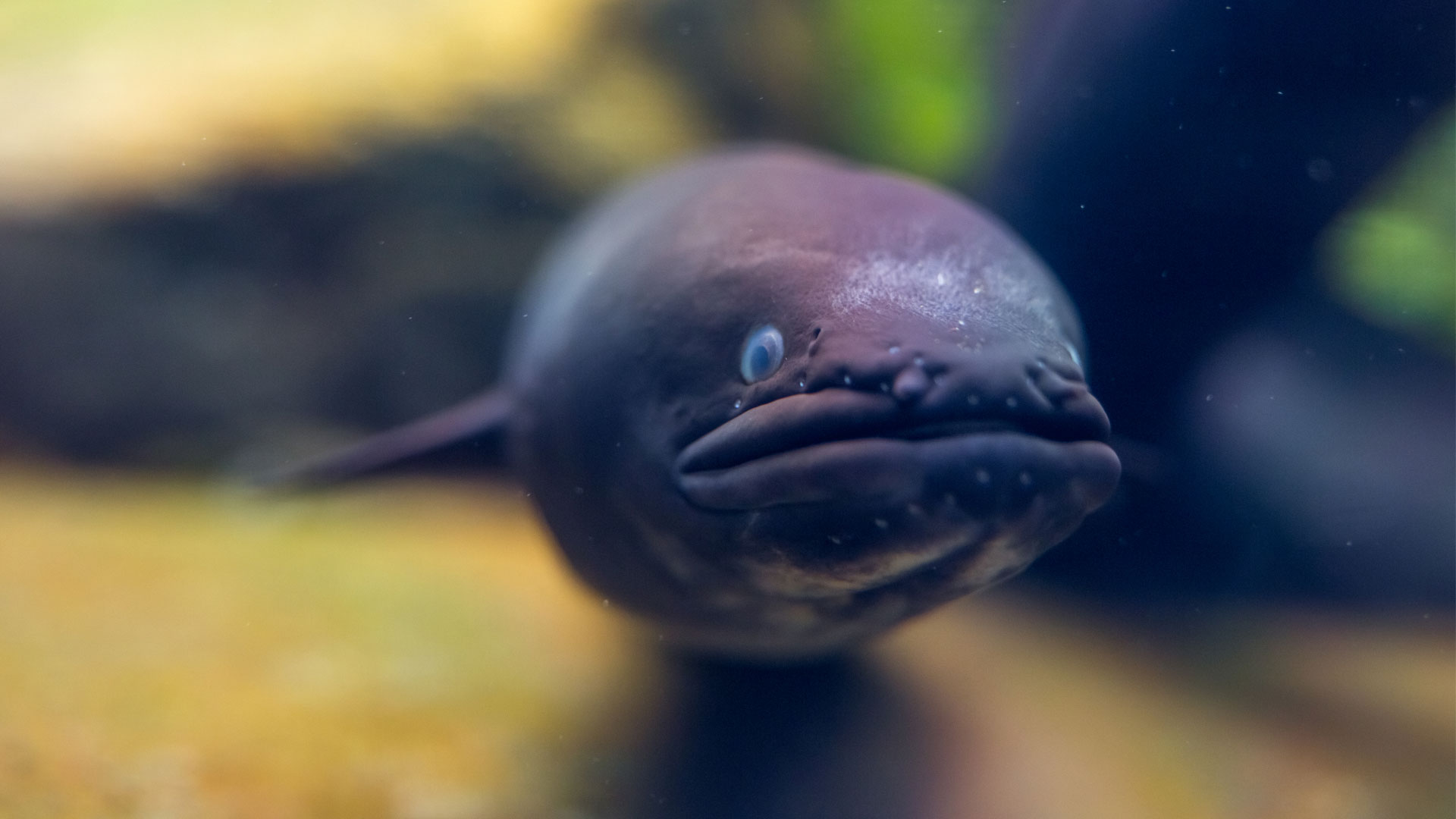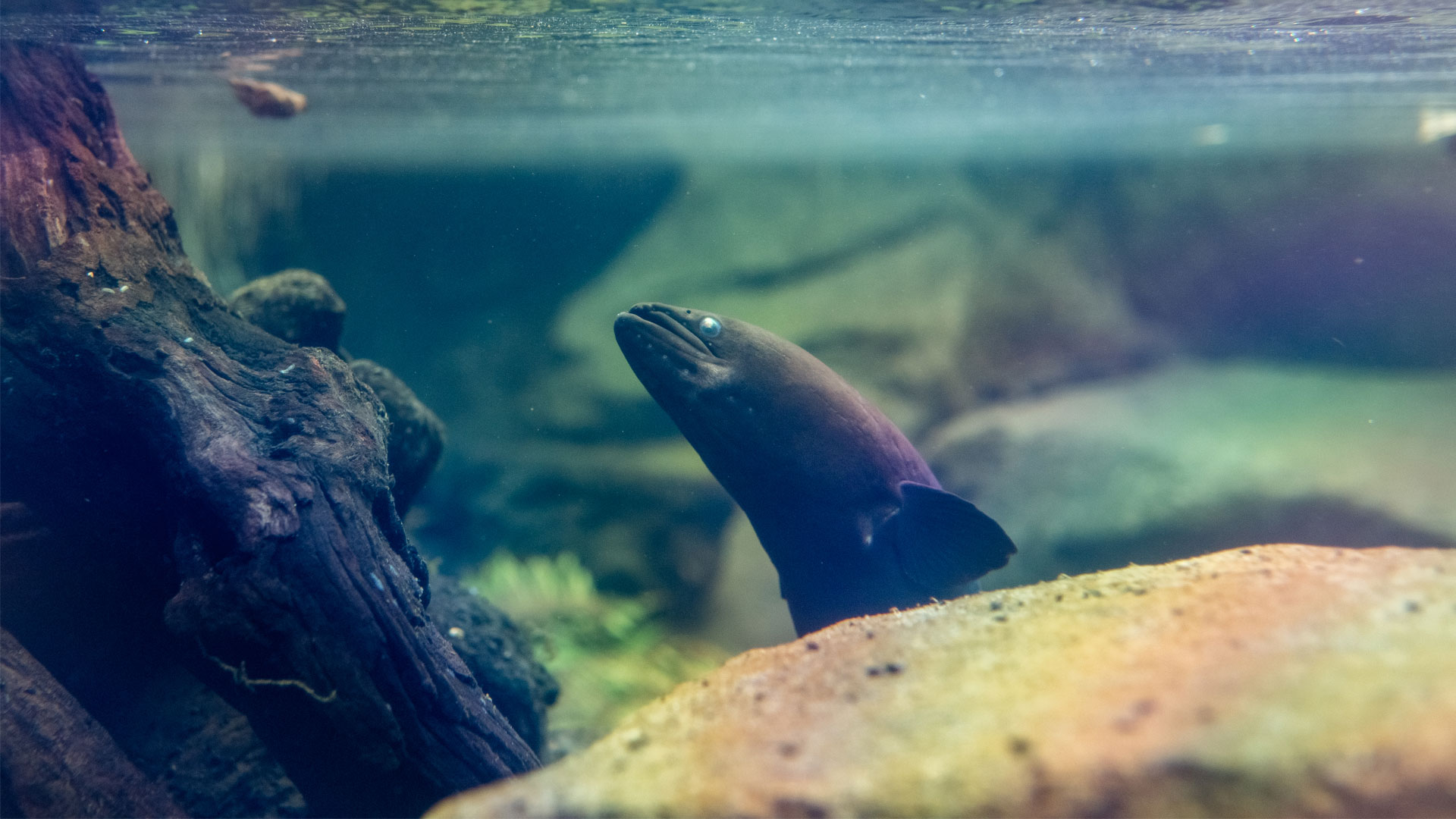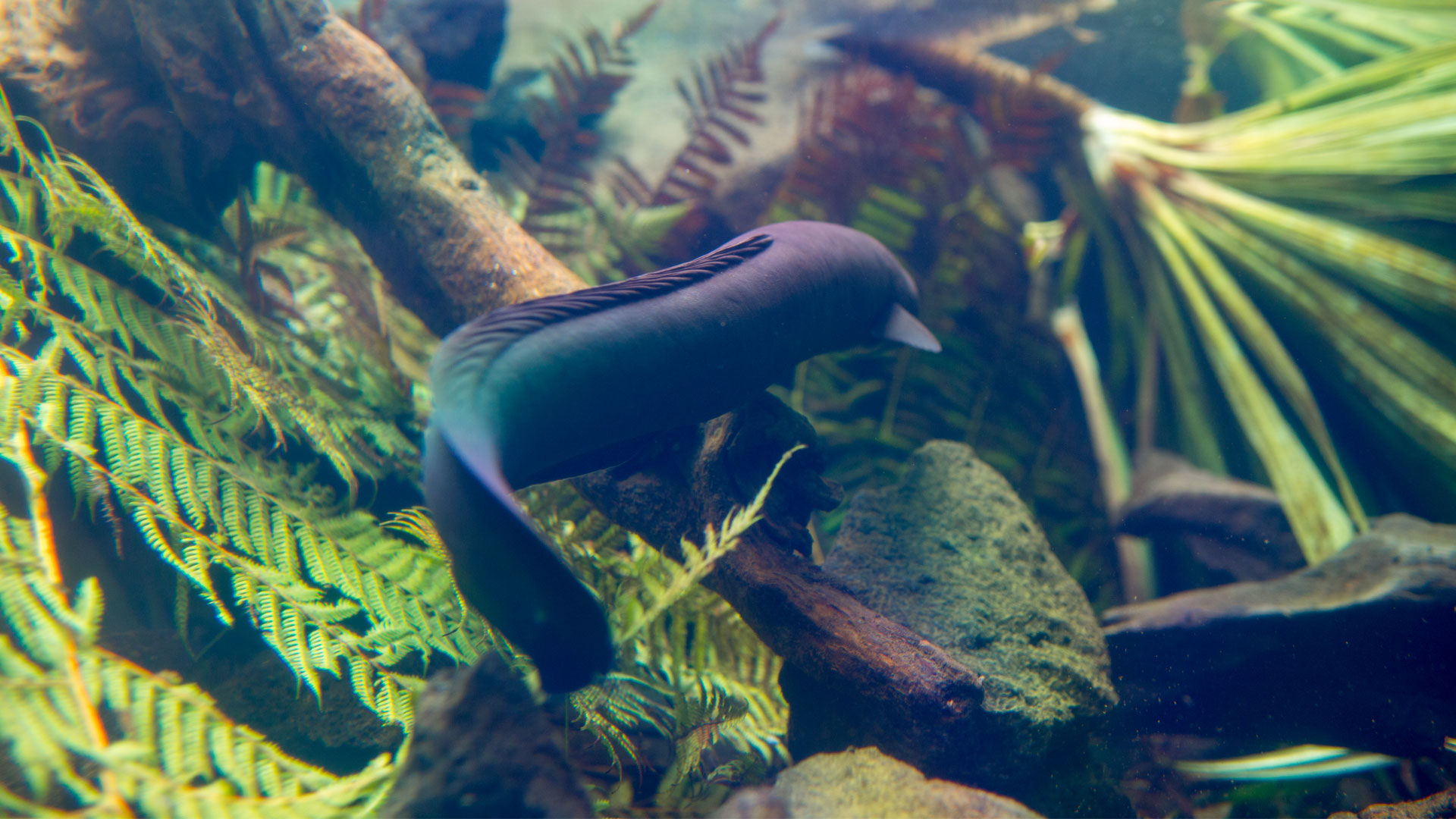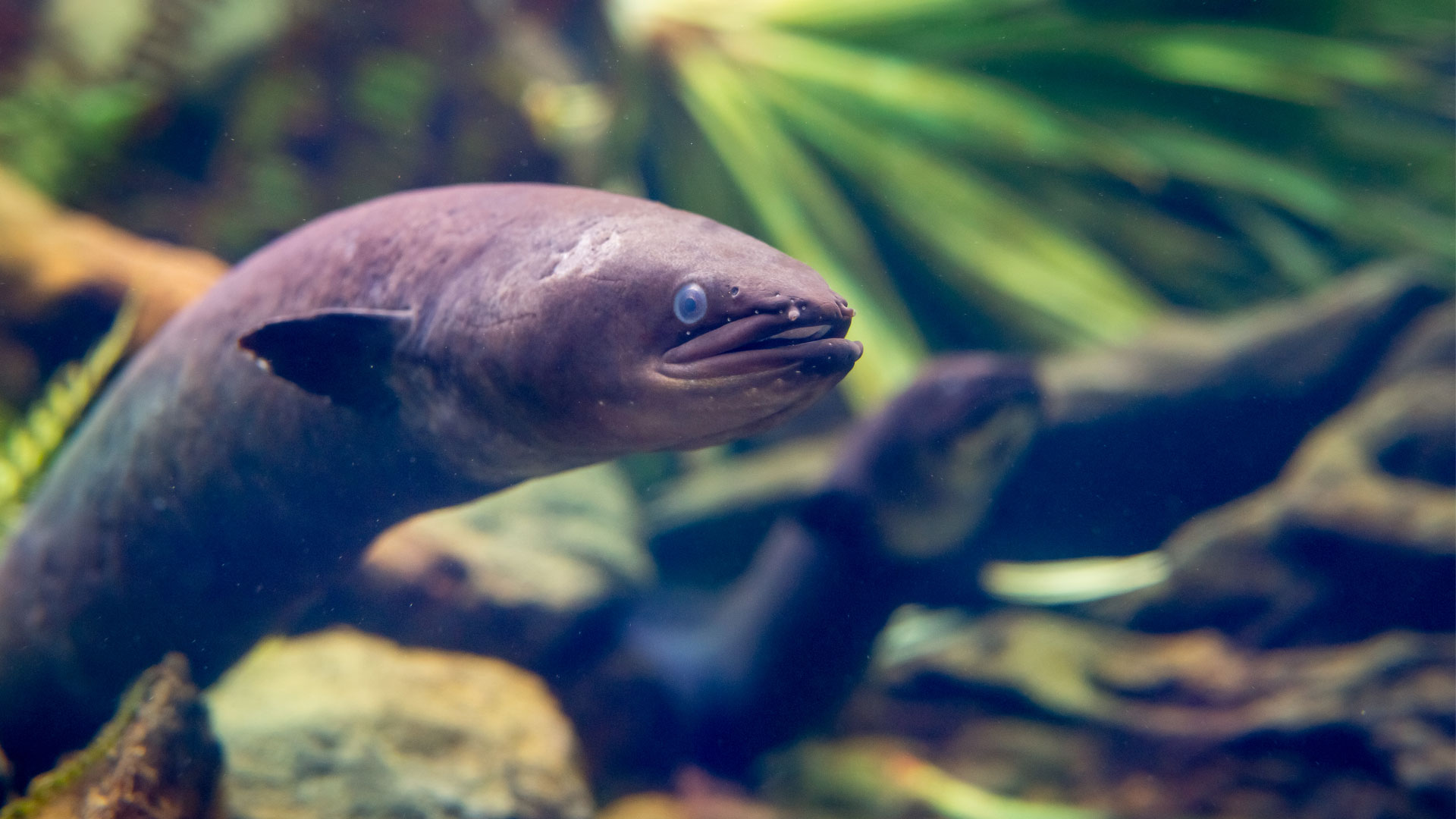Transformational life cycle
Ōrea have a fascinating lifecycle. They start their lives as leaf-shaped larvae called leptocephalus, hatching in the tropical waters of the southwest Pacific Ocean, around Tonga and New Caledonia. After drifting on ocean currents for up to 15 months or more, they change into glass eels as they return to New Zealand waters. Their translucent skin begins to darken as they move into freshwater rivers and streams and the glass eels become elvers.
As elvers they migrate upstream in search of suitable lakes and waterways where they can grow into adults. Their final change happens as they prepare to migrate back to their spawning grounds. Their heads become bullet-like in shape, the skin of their pectoral fins, head and back darkens, their belly lightens to a grey or silver colour and their eyes become much larger – all in the aid of helping them on their journey back to the sea and their spawning grounds.


